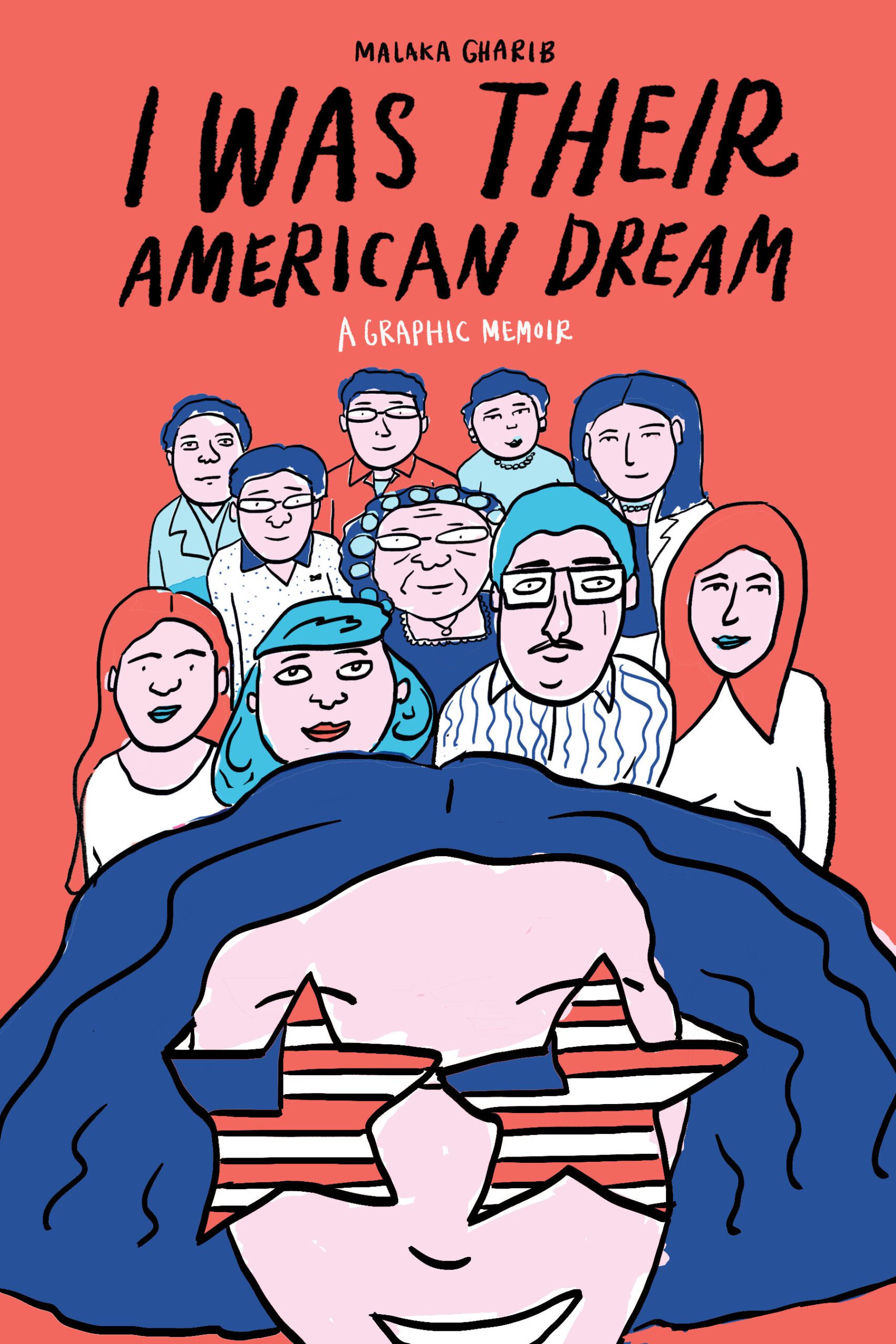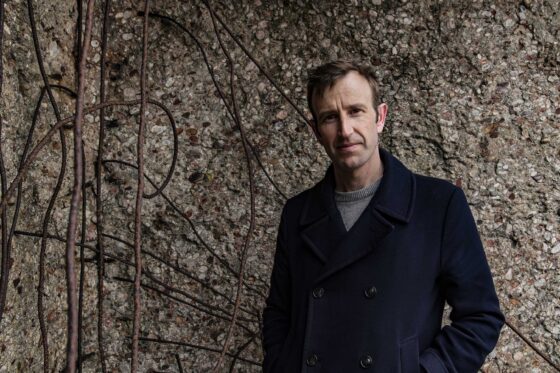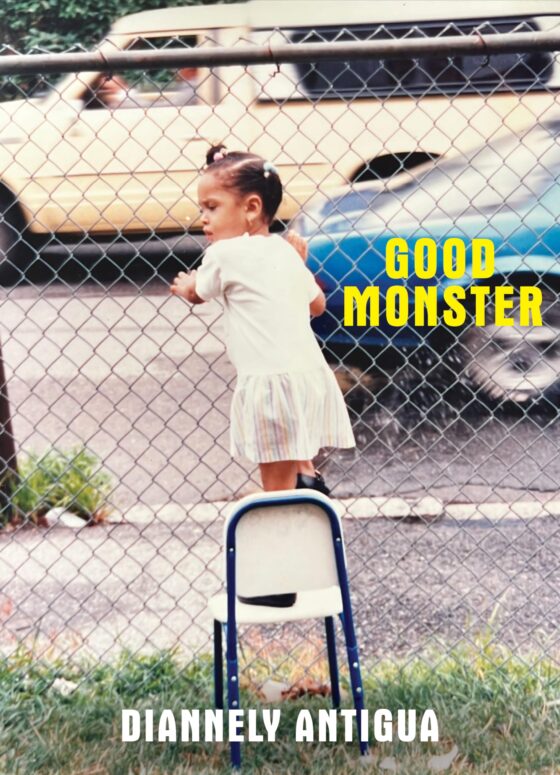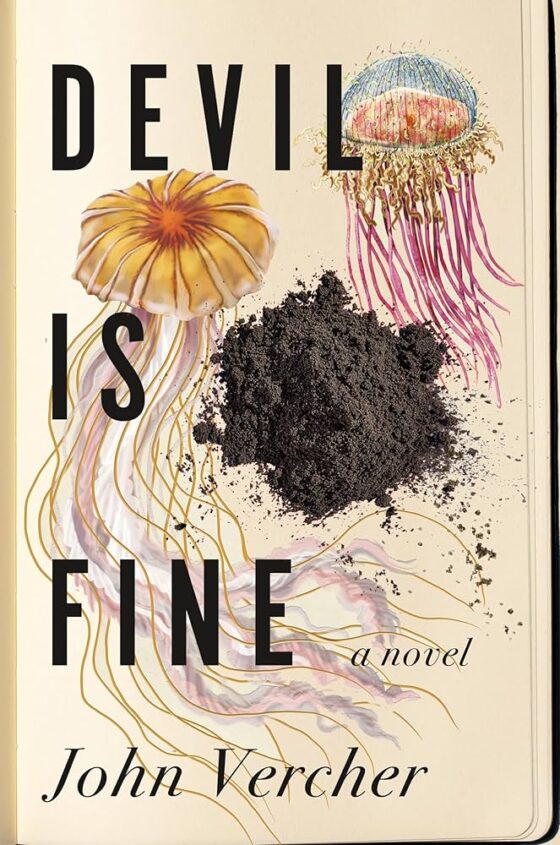
The charming candor of Malaka Gharib’s new graphic memoir, I Was Their American Dream, feels like a conversation with a friend. Reading her story was reminiscent of many late night conversations I had with my first college friends where we sat for hours unraveling our lives, emerging with the feeling that we were, perhaps for the first time, seen and understood.
Through playful illustrations, Gharib recounts her experience growing up in Cerritos, California as a first-generation American. In the book, she juggles the expectations and customs of her Filipino and Egyptian family while carving out an American identity of her own and touching on the timeless question of what it means to belong.
Gharib is an artist, journalist, and writer who is now based in Washington, DC. She is the founder of The Runcible Spoon, a food zine, and the co-founder of the DC Art Book Fair. She lives in a row house with her husband Darren and her nine-year-old rice cooker. I Was Their American Dream will be published on April 30th.
Gharib recently took the time to chat with me on the phone about her artistic process and what she hopes readers will take away from her story, whether or not it mirrors their own.
***
The Rumpus: Was there anything in particular you were hoping for readers to take away from your specific experience, that you were hoping they would learn about Egyptian or Filipino culture?
Malaka Gharib: It’s really hard to be the daughter of immigrants. The fight isn’t over once they move to this country; there are a lot of different unspoken and tough struggles that immigrant kids have to go through, too. I think that a lot of us who were born in the 1980s are coming of age and sort of experiencing that in our own lives. I want people to come away with the idea that, you know, for most of our lives many of us had to act a certain way to be perceived as American, and we don’t have to do that anymore.
Rumpus: This graphic memoir is printed in color, but you chose a limited color palette. I have a hunch it’s because those colors are represented in the American, Egyptian, and Filipino flags. How did you come to that decision?
Gharib: Well the colors are supposed to represent the US flag, and we wanted it to look like a zine. The 90s zine aesthetic really inspired me. It’s supposed to look like it’s screen-printed with halftone colors. The colors are supposed to be red, white, and blue, just slightly updated, like hot red and electric blue.
Rumpus: There are several interactive elements in the book like the paper dolls and the build-your-own-zine. Why was it important to you to include those?
Gharib: I wanted to bring readers into the story. I wanted them to feel like they were engaging and playing with me. I wanted to put people in a position where they could make choices or think critically about some of the challenges that I’ve gone through.
For example, there’s a cartoon of me asking people to guess which things my parents didn’t allow. Just as I didn’t know what my parents would allow and not allow, I would like the reader to try and figure that out. There’s no rhyme or reason, it just doesn’t make sense. For example, they didn’t allow me to buy Lunchables and they let me watch R-rated movies.
Rumpus: That’s actually really funny—Lunchables was one of the things my mom was completely against.
I noticed in this book, as well as in your Catapult piece “Special Request,” and your zine, The Runcible Spoon, it seems like there’s a lot of food in your work. I was wondering if food is something you consider to be an important component of your storytelling, or if it’s something you just find interesting.
Gharib: I’m such a spaz. I do stuff on every single topic. I am definitely interested in food, but I would say that I was interested in so many things. Like, I made my own Polly Pockets recently. Everything interests me.
Rumpus: Looking back at the book, there’s music, there’s a bit about fashion, just a lot of different cultural references. I was wondering, since you wear a lot of different creative hats, how working on this may have differed from the way you work on other creative projects as an editor, or on something that’s a shorter comic, or even a journalistic piece.
Gharib: Yeah, that’s a really good question. I would say that working on a book is really hard. I didn’t know how to do it, and you only know how to do it when it’s over. It takes a lot of discipline, a lot of mistakes, a lot of emotions, and a lot of revision. It was probably the hardest thing I’ve done in my whole entire life.
I didn’t take time off of work to write this book. I did it all at night, so I just had to move my whole life around to make it possible. I couldn’t really have done it without the support of my husband, who just picked up the slack when I wasn’t able to be there physically or emotionally.
Rumpus: It sounds like a long process. In that vein, I was wondering what the impetus was behind you wanting to share your story, and particularly, in this form—a graphic memoir.
Gharib: I definitely felt inspired to write this story after feeling like immigrants were being so stereotyped and overgeneralized. I felt like [what I was seeing] wasn’t my story, and weren’t my friends’ stories, and weren’t my family’s stories. If I could share one story, at least that would be better than none.
I also felt like it was time. There were so many brown people on Netflix coming out during that time in 2016, and I felt really inspired. It was our time to tell our stories. I’m just trying to raise my voice and show other brown people that your story is like mine. We should celebrate it.
Rumpus: I mean, not to say that there are no other stories out there like this in media, but I think there’s definitely a gap that can be flooded with plenty of other stories. I think that this a great drop in what will hopefully become a large bucket. Did you consider the prospective audience or envision a reader while you were writing this story?
Gharib: I guess I was thinking of a few different audiences. For one, I wanted to reassure people of color who grew up in this country that their story isn’t insane. I think that my story, you know, while it is unique, it’s the story of many first-generation immigrants. In a way, it’s the story that we all needed to hear. If only I’d had a book like this when I was younger, to reassure me that like hey, it’s weird growing up here, right? And you’re not alone.
I guess that’s the kind of book that I wanted to write. These are all the challenges that you might face growing up as a first-generation American in this country. Isn’t that crazy? I just wanted to make a totally relatable book. And you’re first-generation, right?
Rumpus: Yeah, I am first-generation. Both of my parents immigrated here from Guyana in South America.
Gharib: Okay, right. So your parents have these crazy, quirky habits and they have these weird notions of what it means to be American, and you’re like um, what? You know what I mean? I feel like anybody can relate to this. I’m sure you were able to relate to it, right?
Rumpus: Yes, definitely.
Gharib: Yeah, and then the other thing is that there’s just so much I wish I could tell my white friends. I have so many white friends from college and from the real world that I made in my twenties in my career. I have really close friends that I’ve been friends with for maybe ten or fifteen years, and they literally know none of this about me.
This is a story that is too awkward to share in a regular conversation, and that they may never have understood or realized was something I wanted to share. I hope that when they read the story, they gain a new understanding of not just me but also of first-generation Americans in this country. It may make them think twice about any assumptions that they might have about first-generation Americans.
I got made fun of when I mispronounced the word “proven.” I didn’t know, my family didn’t know how to pronounce the word. You know, that happened on the job while I was with one of the companies that I worked for. I wish I could’ve known to say at the time, you know my parents aren’t native English speakers and I had to learn all of this myself. And I’m sorry I just don’t know how to pronounce some words, you know? I had to, I’m sure that you did too, learn everything on your own for the most part, right?
Rumpus: Yeah, I mean you’re always sort of straddling between two different worlds, and it’s hard to explain to somebody who doesn’t have that experience.
Gharib: Exactly, and then they kind of don’t get it, and it’s really frustrating. I want to give white people a framework of understanding that we have this rich culture. And you don’t know anything about it because maybe it’s a little awkward to talk about, which we get.
Rumpus: Absolutely. You cover a long span of time in the book. You go from your childhood all the way up to the present day, after your wedding, and I was wondering if any of the memories surprised you while you were recreating them, or if any of them were particularly fun to relive.
Gharib: You know, it was really fun reliving my time in Egypt. I used to hate going to Egypt as a kid because I found it to be so boring and so awful. I was drawing the book, and I realized how I had been exposed to so many different life experiences just having spent time there, learning about a beautiful culture and being immersed in it. There were just so many different smells and colors and tastes and music that I remember. It was really lovely.
Rumpus: Oh that’s great! I remember reading the section about Egypt. I’ve never been, so it came across as very evocative. You talked about learning different things from your dad and your stepmom in Egypt, and your family is a huge part of this memoir. You also talk, in the book, a lot about the experience of balancing your family’s expectations and navigating between the American culture and your own culture. That was an experience that resonated with me, and I was wondering what it’s been like to share your perspective with your family through this book.
Gharib: I actually haven’t shared the book with my family yet.
Rumpus: Oh, wow.
Gharib: Yeah, I’ve shown my mom and dad. They really like the book, so I’m very grateful for that. My brother Achmed, he’s going to college here next year, but he doesn’t know which one yet. My dad was saying, you know, “I was going to tell your brother Achmed,” who’s seventeen, “to try to assimilate and learn as much from the Americans as possible, and try to act like them so that he has a better chance of getting a job. But after reading your book I’m not going to tell him that.” I was like, “Oh?” He said, “I’m going to tell him to just be himself, and they’ll like you for who you are.” I was like, “Ah, you totally got the book, that’s great.”
Rumpus: Oh, that’s awesome!
Gharib: Yeah. My brother lives in Egypt by the way, so he would have to learn how to be American.
Rumpus: This question is a little bit separate from the book, but it kind of ties back to the interactive elements. I wonder if maybe this is serving the same purpose. I know you share a lot of I think what you’ve called flash installations on social media. What inspires you to create and share those?
Gharib: Yes, so I feel like as an artist, I am constantly making things all the time. Sometimes I just get really overwhelmed with emotion and have to put it somewhere, so I’ve just been creating. I don’t know, it feels like a release when I have a feeling, whatever feelings I might have like angry, sad, or happy, and to basically put it in a thought and put it out in the world. It feels like a relief, or a release. I just take pictures of them and then I put them on my Instagram. It’s mostly for me. Other people like it so that’s great, but they’re mostly for me.
Rumpus: I think that’s great. I had fun kind of looking through them. It sort of speaks to that same kind of conversational style that you have in the book, but it’s nice to hear that it’s something that you do for you. That can be important in an artistic space, to have that, at least something you do for yourself, not just for other people.
Gharib: But also, what makes it so important is that it’s relatable. And, you know, often times when I put it out there I want somebody else to feel the way that I do so I’m not alone in my own feelings. That’s sort of an extension of the book, too. I’m putting this story out there because I don’t want to feel alone. I want people to say, Oh my gosh that’s my story too. Then I won’t feel like I’m the only outsider and weirdo on this planet who felt that way, you know? It’s about human connection.
Rumpus: I think that’s definitely true. Both with the installation pieces and with the book, the details may be different, but speaking for myself, I can relate to a lot of the sentiment of both the book and those pieces.
I was wondering how your relationship with your creativity has changed since you were a kid. Have you’ve always been prone to doodling in the margins of your notebooks or writing stories of your own? I was wondering how the way you’ve expressed yourself creatively has evolved for you?
Gharib: I think as long as I can remember I’ve been keeping a diary, and drawing little doodles, and making little books. When I was thirteen, I made my own little book, and then when I became older I realized that they were called zines. Then I made a zine about punk music, and then a zine about food, and then a zine about music again. I started to say, I’m just going to make zines for me.
So zines have always been a presence, but the unifying thing is paper. I really like paper as a medium, so I make Polly Pockets out of them, or I turn them into something else. I like pen and ink, and I like sculpting things. I basically feel most like me when I’m making things. And it’s fun. I feel like this is what life is all about.
***
Photograph of Malaka Gharib © Rebecca Harlan/NPR.





